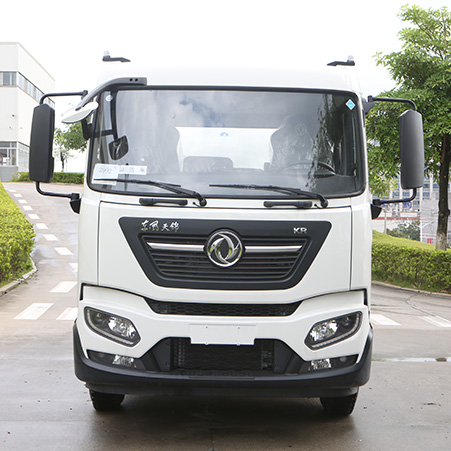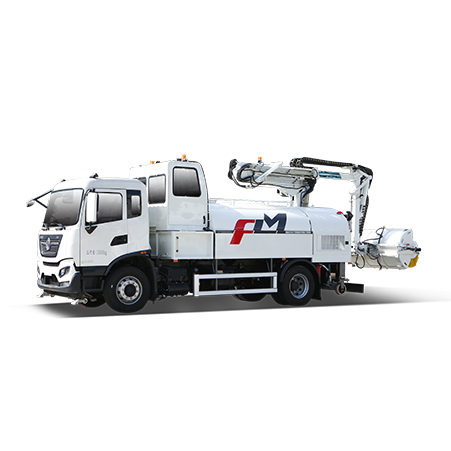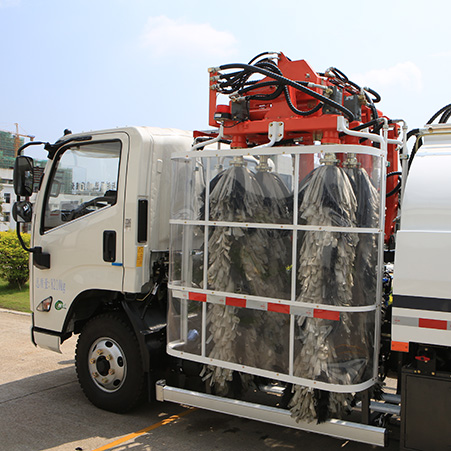Did you know that according to the World Health Organization, air pollution is responsible for an estimated 7 million deaths globally each year? This staggering statistic underscores the critical need for effective pollution monitoring and management. Enter environment monitoring trucks—an unsung hero in our fight against environmental degradation and its impact on human health.
In a world where pollution levels continue to rise, environment monitoring trucks play a vital role in assessing and managing pollution. These mobile laboratories are equipped with advanced technology to measure various pollutants in real time, providing essential data to help keep our air, water, and soil clean.

What are Environment Monitoring Trucks?
Environment monitoring trucks are specialized vehicles equipped with high-tech instruments designed to measure environmental pollutants. They act as mobile laboratories, capable of traversing different areas to collect data on air, water, and soil quality. These trucks are essential for identifying pollution hotspots, tracking pollution sources, and ensuring compliance with environmental regulations.
Types of Pollution Monitored
Environment monitoring trucks are versatile in their ability to monitor various types of pollution, including:
- Air Pollution: Measuring particulate matter (PM2.5 and PM10), nitrogen oxides (NOx), sulfur dioxide (SO2), carbon monoxide (CO), and volatile organic compounds (VOCs).
- Water Pollution: Detecting contaminants like heavy metals, nitrates, phosphates, and microbial pathogens in water bodies.
- Soil Pollution: Analyzing soil samples for hazardous substances such as pesticides, heavy metals, and hydrocarbons.
Measurement Techniques and Tools
To accurately measure pollutants, environment monitoring trucks are equipped with a range of sophisticated tools and techniques.
- Sensors and Analyzers: Advanced sensors detect and measure pollutant concentrations in the air, water, and soil.
- Sampling Devices: Automated systems collect air, water, and soil samples for further analysis.
- Data Loggers and GPS: These tools record data and track the truck’s location to correlate pollution levels with specific areas.
How Environment Monitoring Trucks Work
Environment monitoring trucks function as mobile monitoring stations. They travel to various locations, collecting data on environmental pollutants.
- Deployment: Trucks are deployed to areas of interest based on pollution reports, regulatory requirements, or routine monitoring schedules.
- Sampling: Using automated sampling devices, the truck collects samples from the air, water, or soil.
- Real-Time Analysis: Onboard sensors and analyzers provide real-time data on pollutant levels.
- Data Transmission: Data loggers record the measurements, and the information is transmitted to a central database for further analysis.
The Process of Pollution Measurement
- Preparation: Before deployment, the truck’s equipment is calibrated to ensure accurate measurements.
- Sampling: The truck stops at designated locations to collect samples. Air samples are often taken using high-volume air samplers, while water and soil samples are collected using pumps and augers.
- Analysis: Onboard instruments analyze the samples in real time. For instance, gas analyzers measure the concentration of various gases in the air, while spectrometers identify contaminants in water and soil.
- Data Recording: Measurements are recorded and geotagged, linking pollution levels to specific locations.
Conclusion
Environment monitoring trucks are indispensable tools in our ongoing battle against pollution. By providing real-time, accurate data on various pollutants, these mobile laboratories enable us to identify pollution sources, monitor environmental quality, and take effective action to protect our health and the environment. As technology continues to advance, these trucks will only become more efficient and essential in our quest for a cleaner, healthier planet.
FAQs
1. How often should pollution levels be monitored?
Pollution levels should be monitored continuously to capture real-time data and identify trends. However, the frequency of monitoring can vary based on regulatory requirements and specific environmental conditions.
2. What are the costs associated with deploying environment monitoring trucks?
The costs can vary widely depending on the technology used, the size of the area monitored, and the frequency of monitoring. Investment in high-tech sensors and equipment can be significant but is crucial for accurate data collection.
3. How can the public access pollution data?
Many regulatory agencies provide access to pollution data through their websites or public databases. Some also offer mobile apps for real-time updates on air and water quality.
4. What can individuals do to help reduce pollution based on monitoring data?
Individuals can reduce pollution by adopting eco-friendly practices, such as using public transportation, reducing energy consumption, recycling, and supporting policies aimed at reducing emissions and protecting the environment.
5. Are there any emerging technologies that will improve pollution monitoring?
Yes, emerging technologies such as advanced sensors, Internet of Things (IoT) devices, and artificial intelligence (AI) are set to revolutionize pollution monitoring, making it more accurate, efficient, and accessible.








